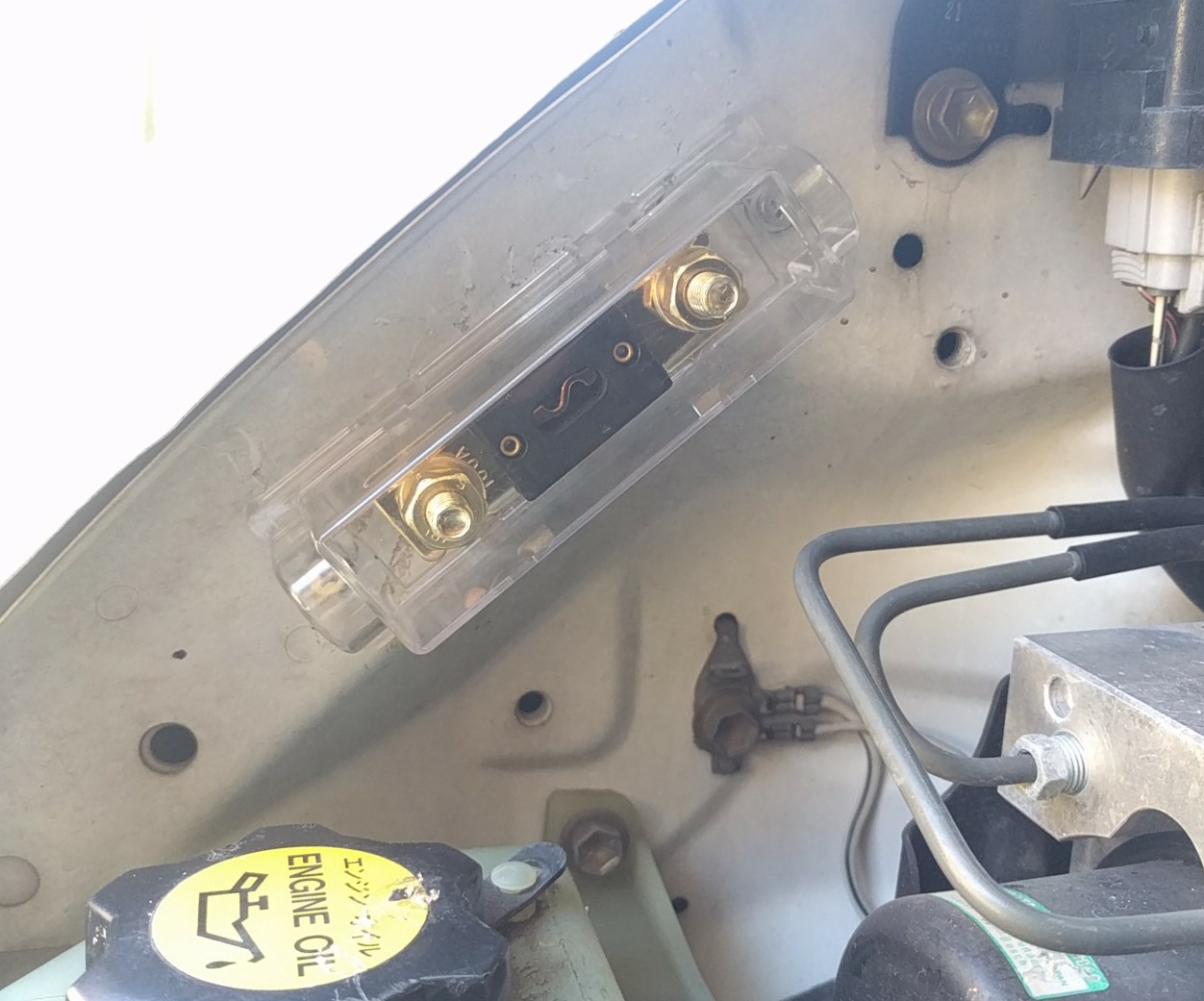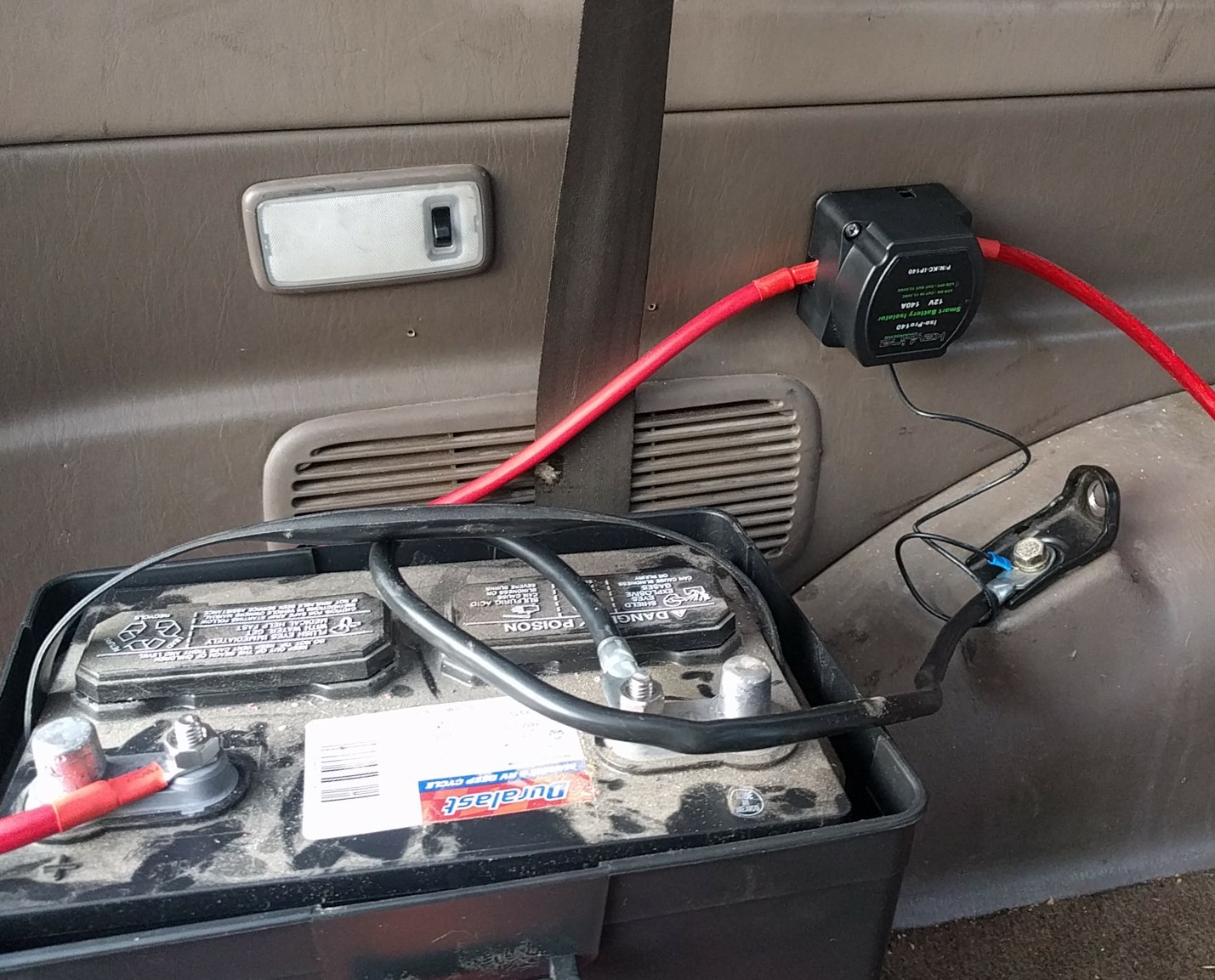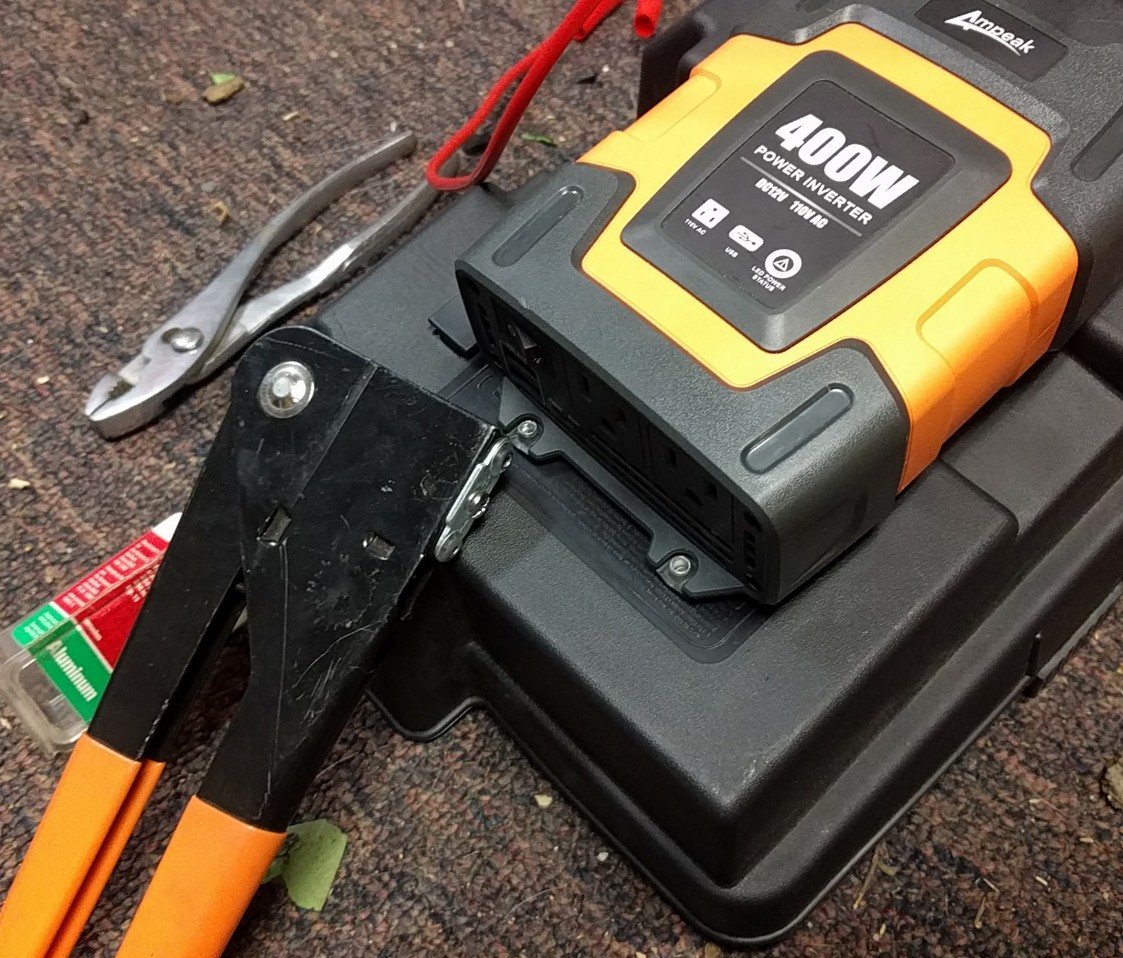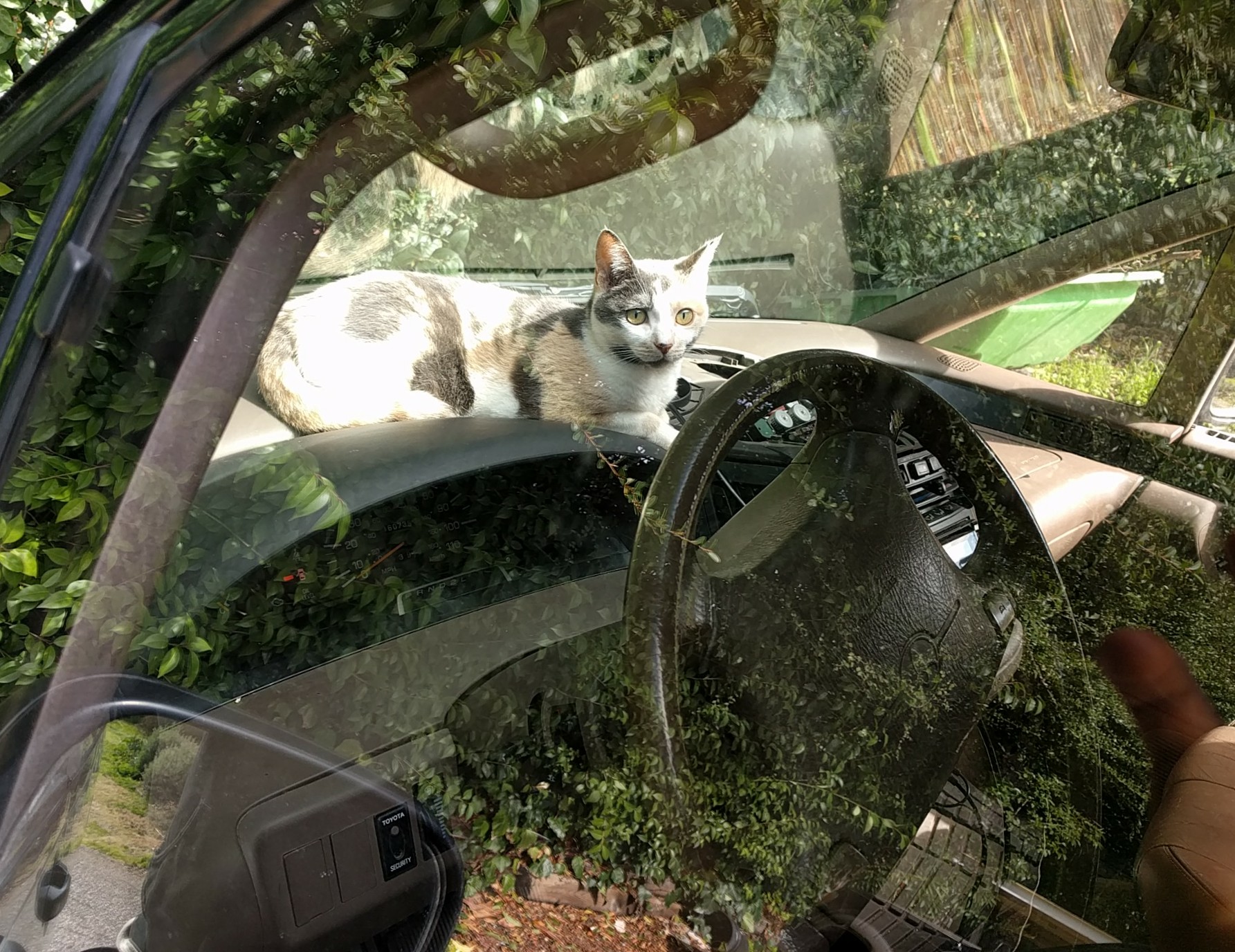Mobile Office Power
This morning as I was sipping coffee, my failure to complete the previous evening's project brought a tear to my eye. That project, was the installation of a secondary battery and power inverter in my #MobileOffice.
The internet options where I live are lousy at best; and while I have enough internet for reading documentation and pushing code, the ability to video conference with coworkers is certainly lacking. If I could get a reliable 3Mbps syncronous connection with sub 100ms pings, my video conferencing problem would be solved. Alas, internet of that quality won't be available to me until SpaceX puts Starlink into service.
So I bought a van, and I'm going to use it as a mobile office, and access the internet by tethering through my phone. For this plan to work, there needs to be a way to charge my laptop in the office, and the charging needs to be independent of the battery that is used to start the van.
Pleasantly, the power is now working :)
At a local autoparts store, I purchased a deep cycle 12 volt battery, and a plastic battery box. From Amazon, I purchased a battery isolator kit, a 400 watt inverter, as well as a 100 amp fuse.
The circuit for this setup is as follows:
van battery positive terminal -> 100 amp fuse -> long run of 4 gauge power cable -> battery isolator -> office battery positive terminal
100 Amp Fuse

There isn't much room anywhere under the hood to mount components. Fortunately there was room enough for the 100 amp fuse. Attempting to install the battery isolator under the hood resulted in a broken drill bit, a lost screw, and a lot of swearing.
Fuck it, I'll just mount the isolator next to the office battery.
The Cabling

Oh, I forgot to take pictures as I was making the cables. For some reason, I had purchased 2 gauge cable ends which were quite a loose fit. A bit of solder and a propane torch quickly made the loose fit nice and snug. Also… Propane torch!
Isolator

When I said "fuck it, I'll just mount the isolator next to the office battery", I meant it. :)
Here is the isolator, the battery, and the battery box; all wired up and tested.
The battery isolator measures the voltage coming down the cable, and when the voltage is above 13.3 volts, the isolator closes the circuit and allows power to flow into the office battery. When the voltage in the cable drops below 12.8 volts, the circuit is broken.
This means that the office battery and the van battery are only ever 'connected' when the van is running and the alternator is generating electricity. As soon as the van is turned off, the office battery is on its own and draining the office battery will have no effect on the van's battery.
Inverter

For some reason, pop-rivets were used to attach the inverter to the lid of the battery box. Velcro would have been preferable, but alas, I can't seem to find my velcro stash. Had I wished to be hella meta, the inverter could have been used to power a hot glue gun which in turn could have glued the inverter to the cover.
The inverter has 2 power outlets and 2 USB ports for all of my charging needs.
current status: Lamp
 Yea, I need to clean up outside. I also need to clean up inside, but that is another story for another time.
Anyway, aside from charging computers and phones, and running a hot glue gun, the inverter can also power lamps...
and who doesn't love lamps? No one. As an added bonus, should I ever get a hankerin to wrench on the van at night, light
will always be available.
Yea, I need to clean up outside. I also need to clean up inside, but that is another story for another time.
Anyway, aside from charging computers and phones, and running a hot glue gun, the inverter can also power lamps...
and who doesn't love lamps? No one. As an added bonus, should I ever get a hankerin to wrench on the van at night, light
will always be available.
Meow

While visiting Mom, her cat decided to crawl into the van and rest in the sunshine.
Dude, I'm hella stoked on the power.
Cheers! :)
Jezra
